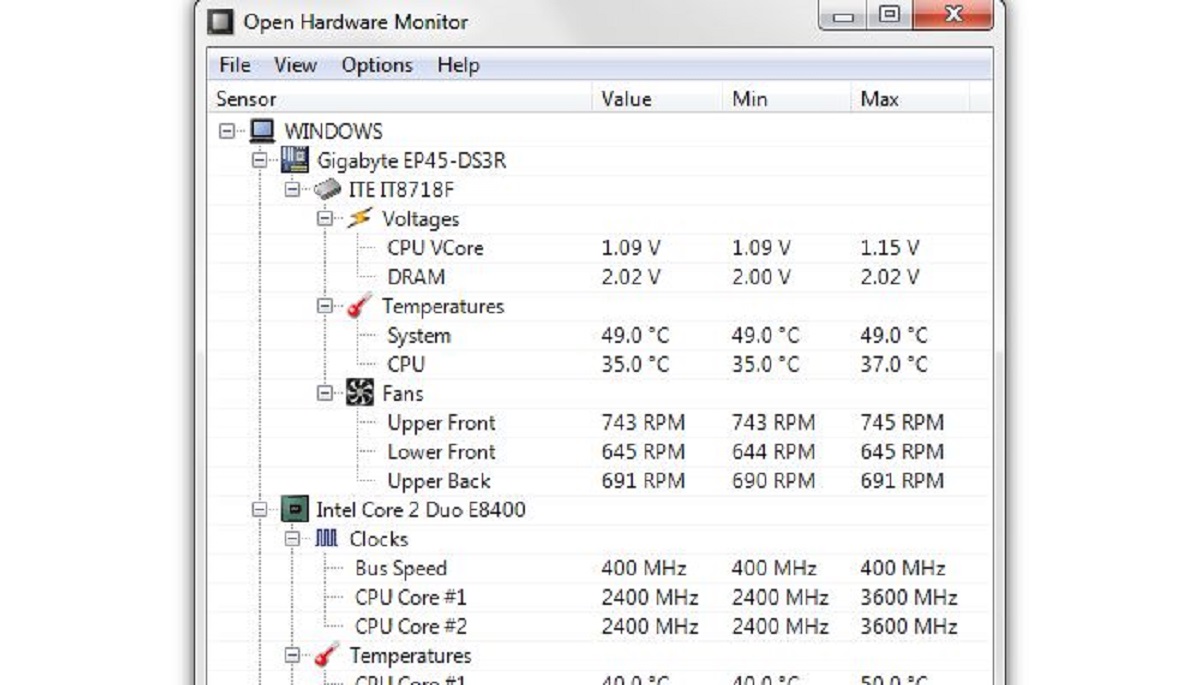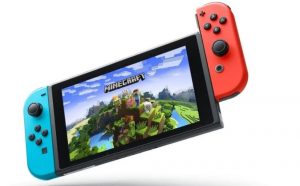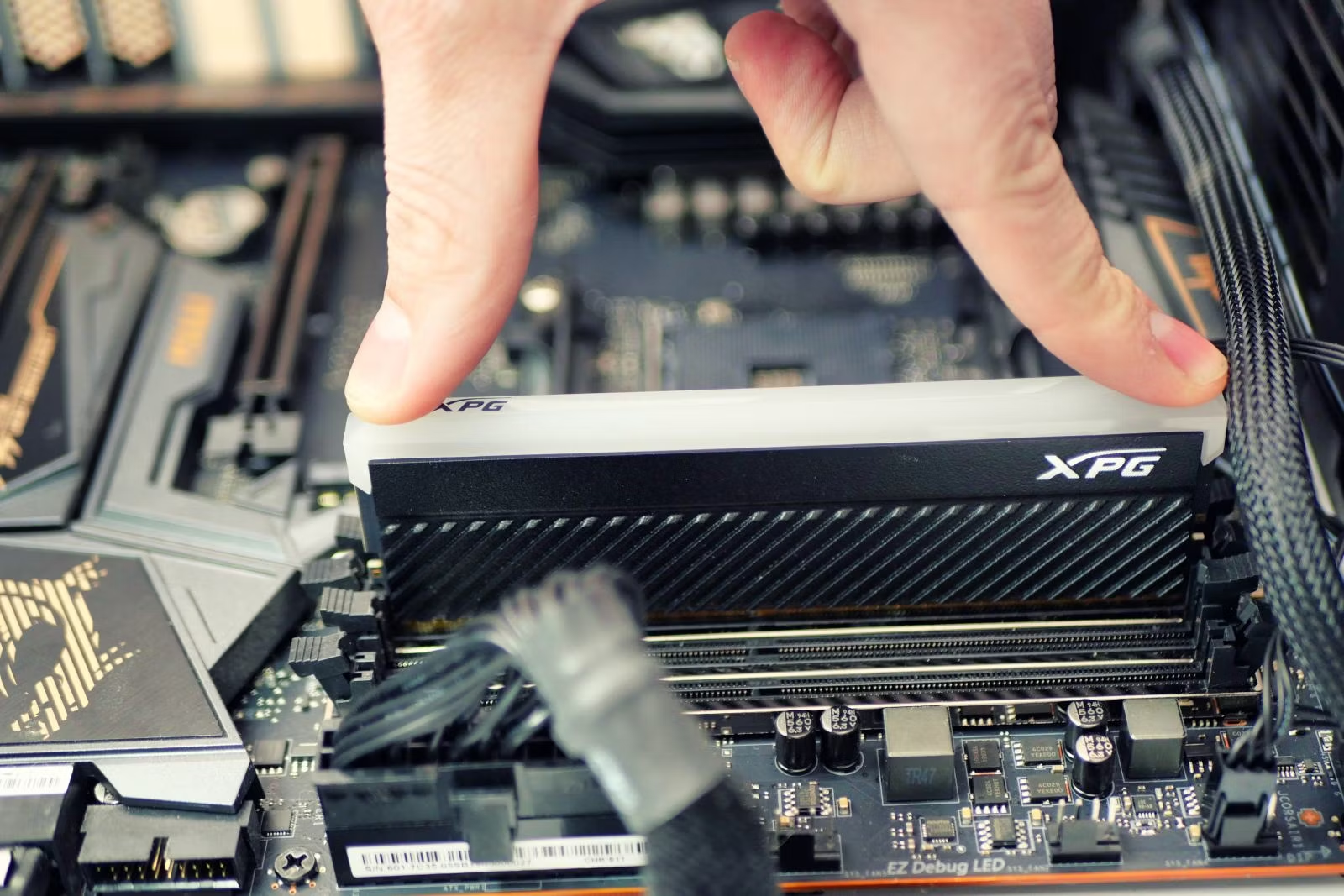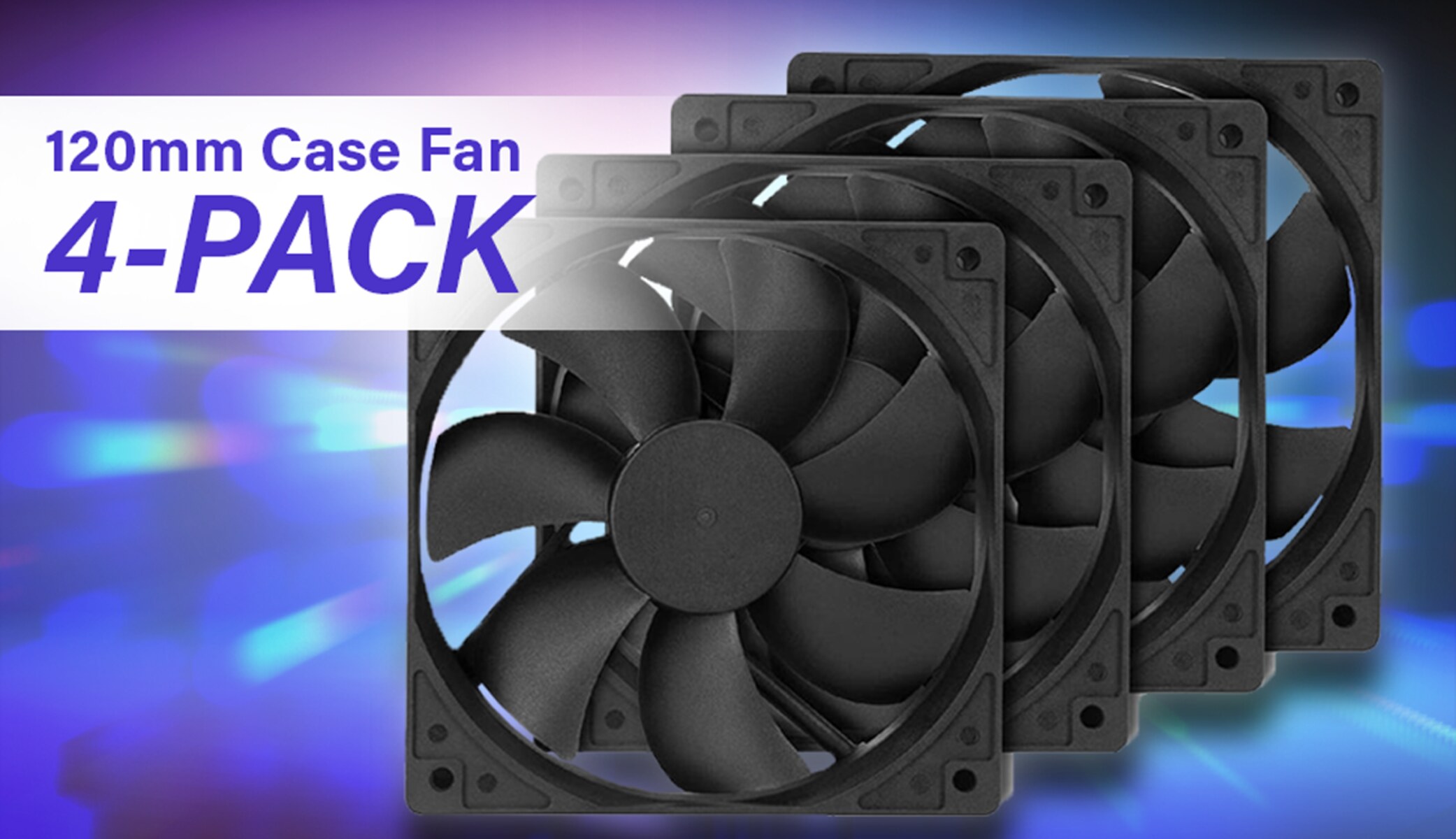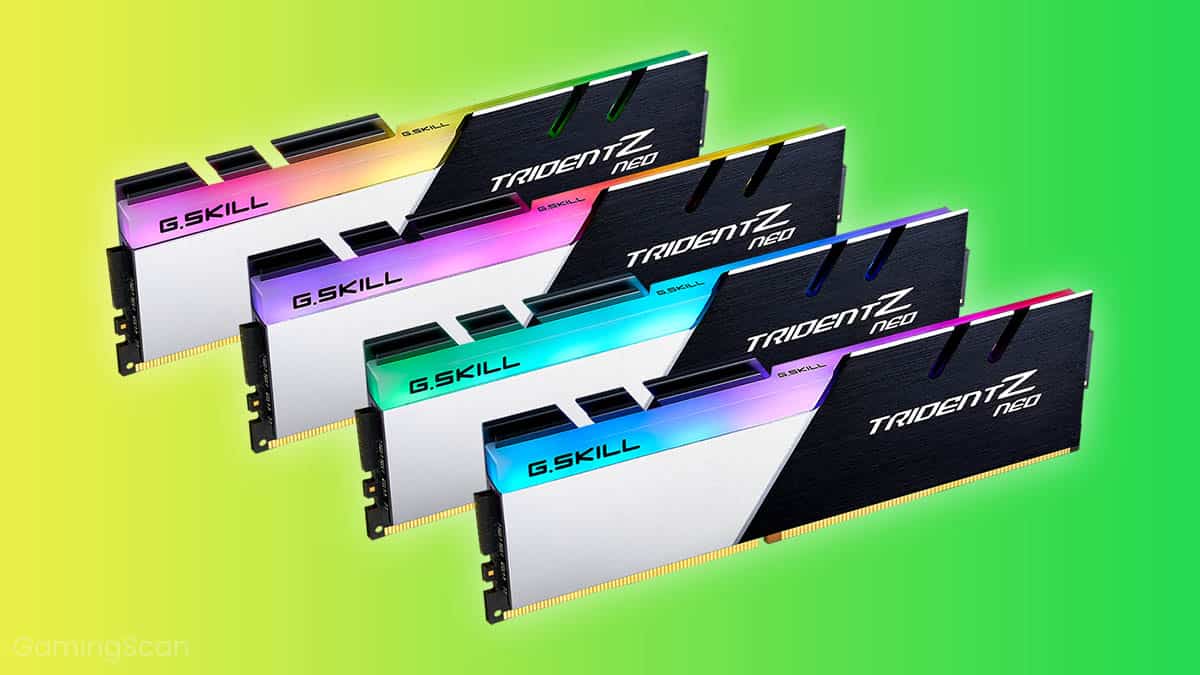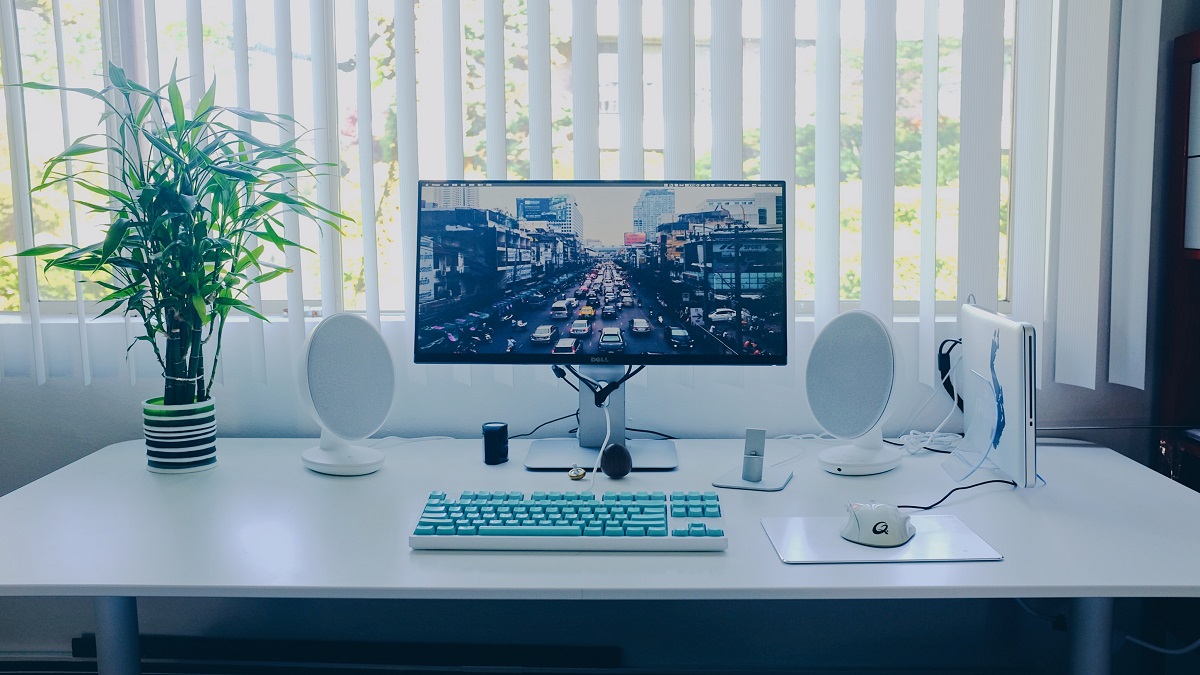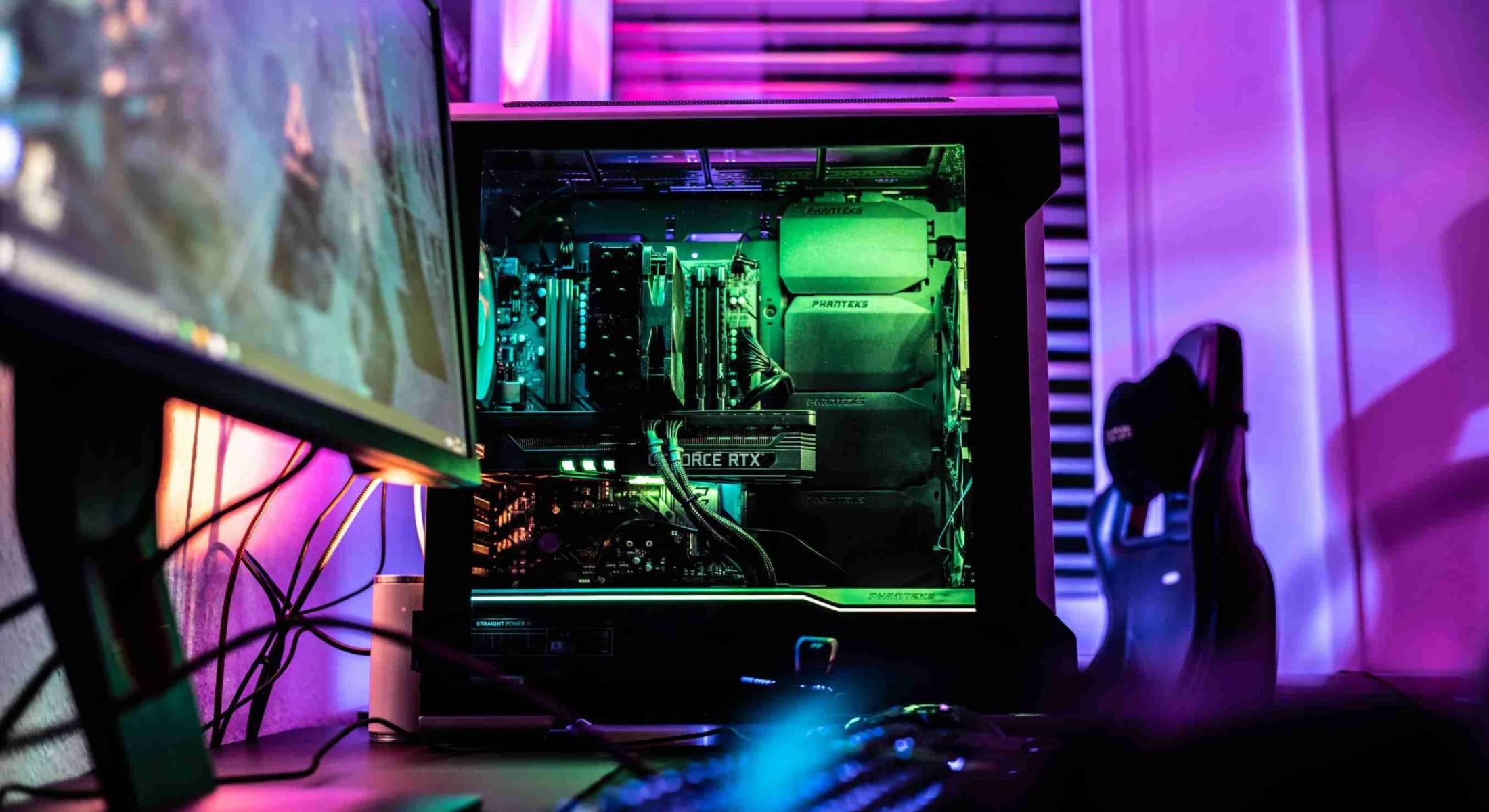Introduction
When it comes to building or upgrading a computer, many people often overlook one crucial component: the power supply unit (PSU). The PSU is responsible for supplying the required amount of electricity to the various components in your PC. Understanding how much power your computer needs is essential for ensuring optimal performance and preventing any potential hardware issues.
Whether you’re a casual user, a gamer, or a professional in fields like graphic design or video editing, it’s crucial to have a power supply that can handle the demands of your system. Overpowering or underpowering your computer can lead to system instability, crashes, and even permanent damage to your components.
In this article, we will delve into the basics of power supply units, examine the components that influence power consumption, discuss different ways to estimate power requirements, and offer guidance on choosing the right PSU for your PC.
By the end of this article, you’ll have a clearer understanding of how much power your PC needs, and you’ll be better equipped to make informed decisions when it comes to selecting a power supply unit that meets your requirements.
Power Supply Unit (PSU) Basics
The power supply unit (PSU) is an essential component in your computer that converts the AC (alternating current) power from your wall outlet into DC (direct current) power that your computer’s components can use. It provides the necessary voltage and current to power the CPU, GPU, motherboard, RAM, storage devices, and other peripherals.
The PSU comes in different wattage ratings, typically ranging from 300W to over 1000W, with higher wattages catering to more power-hungry systems. It’s important to choose a PSU with sufficient wattage to meet the requirements of your components without operating at maximum capacity, as running a PSU near its limit can lead to reduced efficiency, increased heat, and potential system instability.
PSUs are available in different form factors, with ATX (Advanced Technology eXtended) being the most common for desktop computers. They usually have multiple power connectors, including the main ATX 24-pin connector to supply power to the motherboard and various other connectors for different components such as SATA power connectors for storage devices, CPU power connectors, PCIe power connectors for graphics cards, and peripheral connectors for devices like fans and optical drives.
In addition to supplying power, PSUs also incorporate safety features to protect your components and prevent damage in case of power surges, short circuits, or voltage fluctuations. These features include overvoltage protection (OVP), undervoltage protection (UVP), overcurrent protection (OCP), and overtemperature protection (OTP).
When selecting a PSU, it’s crucial to choose a reliable and reputable brand from a trusted manufacturer. Cheap and low-quality PSUs can have stability issues, lower efficiency, and fail to deliver the stated wattage, which can have long-term detrimental effects on your system. Investing in a high-quality PSU will not only provide a stable and efficient power supply but also potentially save you money in the long run by safeguarding your components.
In the next sections, we’ll explore the various components in your computer that influence power consumption and discuss how to estimate power requirements to ensure you choose the right PSU for your needs.
Components that Influence Power Consumption
Power consumption in a computer is influenced by several key components. Understanding how these components affect power usage is essential for determining the overall power requirements of your system.
CPU Power Consumption: The central processing unit (CPU) is one of the primary power consumers in a computer. CPUs with higher clock speeds and more cores generally require more power. Additionally, newer generations of CPUs tend to be more power-efficient, so it’s essential to consider the wattage requirements of your specific CPU model.
GPU Power Consumption: Graphics processing units (GPUs) are critical for tasks that require intensive visual processing, such as gaming, 3D rendering, and video editing. Higher-end GPUs not only offer better performance but often require more power. It’s crucial to consider the power requirements of your chosen GPU, especially if you’re building a gaming or multimedia-focused system.
RAM Power Consumption: Random access memory (RAM) modules play a crucial role in storing and accessing data for running applications. While RAM modules themselves consume minimal power, using higher-capacity modules or multiple modules can slightly increase power consumption. However, the impact on overall power requirements is usually minimal.
Storage Power Consumption: Storage devices, including hard disk drives (HDDs) and solid-state drives (SSDs), have varying power consumption levels. SSDs are generally more power-efficient than HDDs due to their lack of mechanical components. However, power consumption from storage devices typically constitutes a small portion of the overall power consumption in a computer.
Motherboard Power Consumption: The motherboard acts as the central hub connecting various components in your PC. While it consumes power itself, the primary role of the motherboard is to distribute power to other components. The power required by the motherboard mainly depends on its features, such as the number of expansion slots, ports, and integrated components.
Other Components that Contribute to Power Consumption: Although the CPU, GPU, RAM, storage devices, and motherboard have the most significant impact on power usage, other components, such as cooling fans, optical drives, and peripherals, should also be considered. While their power consumption is generally minimal compared to the primary components, it’s essential to factor them into your overall power requirements.
By understanding how these components influence power consumption, you can estimate the total power requirements of your system more accurately. In the next sections, we’ll delve into different methods for estimating power consumption and calculating the wattage needed for your PC.
CPU Power Consumption
The central processing unit (CPU) is often referred to as the “brain” of the computer, as it performs the majority of calculations and executes instructions. As such, CPUs are one of the primary power consumers in a computer system.
CPU power consumption varies depending on several factors, including clock speed, core count, architecture, and manufacturing process. CPUs with higher clock speeds and more cores generally require more power. However, newer generations of CPUs are designed to be more power-efficient, providing better performance while consuming less energy.
Manufacturers provide a specification called the Thermal Design Power (TDP) for their CPUs. TDP represents the maximum amount of power the CPU will require under normal operating conditions and cooling. It serves as a reference point for selecting the appropriate cooling solution and power supply for your system.
When choosing a CPU, it’s crucial to consider the TDP as it directly relates to power consumption. CPUs with higher TDP ratings will require more power and generate more heat, necessitating a corresponding increase in cooling capabilities.
It’s worth noting that the power consumption of a CPU can vary based on the workload. CPUs have the ability to boost their clock speeds temporarily when certain tasks require additional processing power. During these boost periods, power consumption may spike. Therefore, it’s essential to consider both the base TDP and potential boost power requirements when estimating overall CPU power consumption.
Furthermore, different applications and software can affect CPU power consumption. Tasks that involve heavy computational work, such as video rendering or scientific simulations, will put a higher load on the CPU, resulting in increased power consumption. On the other hand, lighter tasks like web browsing or document editing will have lower power requirements.
When building or upgrading your computer, it’s important to choose a CPU that meets your performance needs while keeping power consumption in mind. Selecting a CPU with adequate processing power for your desired tasks, along with efficient power management features, can ensure both optimal performance and energy efficiency.
In the next sections, we’ll explore power consumption in other key components like the GPU, RAM, storage devices, and the motherboard, providing you with a comprehensive understanding of the power requirements of your system.
GPU Power Consumption
Graphics processing units (GPUs) are essential for tasks that require intensive visual processing, such as gaming, 3D rendering, and video editing. GPUs not only impact graphics performance but also contribute significantly to power consumption in a computer system.
GPU power consumption varies depending on factors such as the architecture, clock speed, number of cores, and manufacturing process. Generally, high-end GPUs require more power due to their increased performance capabilities. However, advancements in GPU technology have led to improved power efficiency, allowing for better performance without excessive power consumption.
Similar to CPUs, GPU manufacturers provide specifications such as the Thermal Design Power (TDP) or Maximum Power Consumption (Max Power) that indicate the maximum amount of power the GPU will require under normal operating conditions. These specifications help determine the appropriate power supply and cooling solution for your system.
It’s important to note that power consumption can vary depending on the workload and application. While gaming or running graphically demanding applications can push the GPU to its maximum power consumption, lighter tasks like web browsing or document editing will result in lower power requirements. Some modern GPUs also offer power-saving features that adjust the power consumption based on the workload to improve energy efficiency.
Additionally, some GPUs come with built-in overclocking capabilities, allowing users to push the GPU beyond its stock settings for better performance. However, overclocking generally leads to increased power consumption and heat generation. Therefore, it’s crucial to consider the power requirements and cooling capabilities of your system before overclocking the GPU.
When selecting a GPU, it’s essential to balance performance requirements with power consumption. Choosing a GPU with excessive power consumption may necessitate a higher wattage power supply and more robust cooling, potentially increasing system costs. On the other hand, opting for a lower-power GPU may result in compromised performance for demanding tasks.
By researching and understanding the power consumption characteristics of the GPU you plan to use, you can make informed decisions to ensure optimal performance while maintaining energy efficiency.
As we continue, we will explore power consumption in other key components such as RAM, storage devices, the motherboard, and other peripherals to provide a comprehensive understanding of the power requirements for your system.
RAM Power Consumption
Random access memory (RAM) is a critical component in any computer system as it provides temporary storage for data that the CPU needs to access quickly. While RAM itself consumes minimal power compared to other components, its overall power consumption can increase depending on the capacity and number of modules used.
The power consumption of RAM modules is primarily determined by their voltage rating and operating frequency. Higher voltage and faster operating frequencies generally result in increased power consumption. However, the power difference between various RAM modules is usually minimal and has a minimal impact on the overall power requirements of the system.
Most modern RAM modules operate at standard voltage levels, such as 1.2V or 1.35V. These voltage ratings are designed to minimize power consumption while maintaining stable performance. It’s worth noting that higher-capacity RAM modules may consume slightly more power than lower-capacity ones due to the additional components required for increased storage capacity.
When it comes to power consumption, the number of RAM modules used in a system is a more significant factor than their voltage or operating frequency. More RAM modules typically require more power, although the impact on overall power consumption is usually minimal.
It’s important to mention that RAM power consumption is not constant and varies depending on usage patterns. When the system is idle or engaged in light tasks, RAM power consumption remains relatively low. However, it can increase during intense memory-intensive tasks, such as multitasking, running memory-intensive applications, or performing heavy data processing.
Overall, when considering RAM power consumption, it’s more practical to focus on factors like capacity, speed, and compatibility with your CPU and motherboard rather than solely worrying about power consumption. The actual power impact of RAM in a modern system is seldom significant enough to drive the selection process.
In the next sections, we’ll explore power consumption in other key components like storage devices, the motherboard, and other peripherals, providing you with a comprehensive understanding of the power requirements of your system.
Storage Power Consumption
Storage devices, including hard disk drives (HDDs) and solid-state drives (SSDs), play a crucial role in storing and retrieving data in a computer system. When it comes to power consumption, there are some differences between these two types of storage devices.
Hard disk drives (HDDs) are the traditional storage option that uses rotating disks and mechanical components. They require a motor to spin the disks and read/write heads to access the data. As a result, HDDs typically consume more power compared to solid-state drives (SSDs). The power consumption of HDDs primarily depends on the rotation speed of the disks and the number of platters.
On the other hand, solid-state drives (SSDs) do not have any moving parts and rely on NAND flash memory. Due to the absence of mechanical components, SSDs are generally more power-efficient than HDDs. While the power consumption of SSDs can vary between different models, in general, SSDs consume less power during data accesses and transfers.
It’s important to note that the power consumption of storage devices contributes to a relatively small portion of the overall power consumption in a computer system. The CPU, GPU, and other components typically have a more significant impact.
However, in certain scenarios where you have multiple storage devices or utilize high-performance SSDs in a RAID configuration, the power consumption can become more relevant. Additionally, energy-saving features in operating systems and storage devices can also help reduce power consumption during periods of inactivity or low usage.
When selecting storage devices, considerations such as capacity, performance, reliability, and compatibility often outweigh power consumption. It’s recommended to choose storage devices based on your specific needs and requirements, optimized for performance and data storage rather than focusing solely on power consumption.
In the following sections, we will explore power consumption in other key components such as the motherboard, the CPU, the GPU, and other peripherals to provide a comprehensive understanding of the power requirements for your system.
Motherboard Power Consumption
The motherboard is the central component that connects all other hardware in a computer system and provides power to various components. While the motherboard itself consumes power, its primary role is to distribute power efficiently to other components.
The power consumption of the motherboard depends on several factors, including its form factor, features, and the components that are connected to it. Motherboards of different form factors, such as ATX, micro ATX, or mini ITX, have varying power consumption levels. Larger motherboards may require more power due to their additional features and expansion slots.
The power consumption of the motherboard is influenced by the number and type of components connected to it, including the CPU, graphics card, RAM, storage devices, and other peripherals. Each component draws power from the motherboard, and the motherboard ensures that the correct voltage and current are supplied to these components.
Some motherboards offer power-saving features and technologies to optimize energy efficiency. These features can include advanced power management options, voltage regulators, and efficient power delivery systems to minimize wastage and improve overall power consumption.
It’s worth noting that motherboards typically consume a relatively small portion of the overall power in a computer system. The CPU and GPU are typically the most power-hungry components. However, choosing a motherboard with efficient power management features and robust power delivery systems can contribute to a more energy-efficient system.
When selecting a motherboard, it’s important to consider its power requirements based on the components you plan to connect to it. Ensure that the power supply unit (PSU) you choose can meet the necessary power demands and that the motherboard has the appropriate power connectors for the required components.
In summary, the power consumption of the motherboard itself is relatively low compared to other components such as the CPU and GPU. However, choosing a motherboard with energy-efficient features and appropriate power delivery capabilities is still important to ensure overall system efficiency.
In the next sections, we will explore power consumption in other key components such as CPUs, GPUs, RAM, storage devices, and other peripherals, providing a comprehensive understanding of the power requirements for your system.
Other Components that Contribute to Power Consumption
While the CPU, GPU, RAM, storage devices, and the motherboard are the primary components that influence power consumption in a computer system, there are other components that also contribute to power requirements.
Cooling Fans: Cooling fans are essential for maintaining optimal temperatures inside the computer case. They help dissipate heat generated by the CPU, GPU, and other components. While individual fans have relatively low power consumption, systems with multiple high-performance fans or liquid cooling solutions may require higher power capacities.
Optical Drives: Optical drives, such as DVD or Blu-ray drives, allow for reading and writing data from optical discs. While the power consumption of optical drives is relatively low, it’s worth considering if you plan to frequently use optical media, as the power requirements can vary depending on the drive speed and technology.
Peripherals: Peripherals, such as keyboards, mice, and printers, also consume some power when connected to the computer system. USB-powered peripherals, for example, draw power from the motherboard or external power sources. However, the power requirements of individual peripherals are generally minimal and have minimal impact on the overall power consumption.
Power Supply Efficiency: While not a component in itself, the efficiency of the power supply unit (PSU) is an important factor to consider. PSUs have efficiency ratings, such as 80 Plus Bronze, Silver, Gold, or Platinum, indicating how effectively they convert AC power into DC power. Higher-efficiency PSUs waste less energy as heat and can lower overall power consumption.
It’s important to note that power consumption for these additional components is generally minor compared to primary components like the CPU and GPU. However, when building or upgrading a system, it’s still crucial to account for the power requirements of peripherals and ensure the PSU can accommodate the necessary power demands of all components.
By considering the power consumption of other components, you can ensure that your power supply is appropriately sized and that your system operates efficiently. In the following sections, we will explore methods to estimate power requirements and calculate power consumption accurately.
Estimating Power Requirements
Estimating the power requirements for your computer system is essential to ensure that you select a power supply unit (PSU) that can adequately meet the demands of your components. While there are various methods to estimate power requirements, it’s important to consider factors such as the components you are using, their power specifications, and any potential future upgrades you may have in mind.
Manufacturer Specifications: Checking the specifications provided by component manufacturers is a good starting point. CPUs, GPUs, and other components often have suggested wattage requirements or Thermal Design Power (TDP) ratings. These specifications provide a basic understanding of the power needs of individual components.
Online Power Supply Calculators: Online power supply calculators are tools that can help you estimate the power requirements of your system. These calculators typically ask for details of all components in your build, including CPU, GPU, RAM, storage, motherboard, and peripherals. They use algorithms to calculate the estimated power consumption based on the specifications provided. While these calculators can provide a general idea, it’s important to remember that they are only estimates and actual power consumption can vary.
Manual Estimations: For a more precise estimation, you can manually calculate power consumption by adding up the power requirements of individual components. Use the TDP values for CPUs and GPUs, the power ratings for RAM and storage devices, and consider the power consumption of other peripherals. Summing them together will give you an idea of the maximum power consumption. However, keep in mind that components rarely operate at their maximum power consumption simultaneously, so the actual power usage will likely be lower.
Consider Future Upgrades: When estimating power requirements, it’s important to consider any potential future upgrades or additions to your system. If you plan to add more RAM, upgrade your GPU, or include additional storage devices, account for their power requirements as well. Anticipating future upgrades ensures that you don’t outgrow your PSU capacity too quickly.
Consulting PSU Efficiency and Headroom: It’s recommended to select a PSU with a slightly higher wattage capacity than your estimated power requirements. This provides headroom for future upgrades and ensures that your PSU operates at a comfortable load, which can lead to improved efficiency and longevity. Additionally, choosing a PSU with higher efficiency can help reduce power wastage and lower overall energy consumption.
Remember that power requirements can vary based on system usage, so it’s important to consider both the typical workload as well as peak usage scenarios when estimating power requirements. By taking these factors into account, you can select a PSU that can adequately power your system while allowing room for future growth and ensuring optimal performance.
In the next section, we will delve into the calculations involved in determining the power consumption of individual components to help you make more informed decisions when choosing a power supply.
Calculating Power Consumption
To calculate the power consumption of your computer system, you need to determine the power requirements of individual components and sum them together. Here’s a breakdown of the key components to consider when calculating power consumption:
CPU: Start by noting the Thermal Design Power (TDP) specified by the CPU manufacturer. This value represents the maximum power the CPU is expected to require under normal operating conditions
GPU: Determine the power requirements of your graphics card by referring to the manufacturer’s specifications. Look for the TDP or maximum power consumption value provided.
RAM: RAM modules have minimal power consumption, typically specified in volts. Multiply the voltage by the maximum amperage to get the power consumption per module. Multiply this value by the number of modules you have.
Storage Devices: Evaluate the power requirement for each storage device separately. Hard disk drives (HDDs) and solid-state drives (SSDs) usually have power consumption values specified by the manufacturer.
Motherboard: The motherboard itself has a low power consumption. You can usually find the value listed in the motherboard’s specifications. Be sure to also factor in any additional components connected to the motherboard, such as fans or peripherals.
Other Components: Include the power requirements of cooling fans, optical drives, and other peripherals connected to your system. These components generally have relatively low power consumption, but their values should still be considered.
Once you have collected the power consumption values of each component, sum them together to get the estimated power consumption of your system. It’s recommended to add a small buffer to the final value to account for any fluctuations.
Keep in mind that the power consumption of components rarely reaches their maximum values simultaneously. Most calculations assume worst-case scenarios, meaning the actual power consumption of your system will often be lower than the calculated value.
Calculating power consumption is especially crucial when choosing a power supply unit (PSU) for your computer system. Ensuring that your PSU can provide sufficient power and handle potential peak loads is essential to maintain stability and prevent overheating or system failures.
In the next section, we will discuss important considerations when choosing the right PSU for your system, including efficiency ratings and wattage requirements.
Choosing the Right PSU
Choosing the right power supply unit (PSU) for your computer system is crucial to ensure stable and efficient power delivery to all components. Here are some key factors to consider when selecting a PSU:
Wattage: The wattage rating of a PSU determines the maximum amount of power it can provide to your system. Calculate the estimated power consumption of your components and choose a PSU with a wattage rating that can comfortably handle that load. It’s recommended to add a buffer to account for fluctuations and potential future upgrades.
Efficiency: PSU efficiency refers to how effectively it converts AC power from the wall outlet into DC power for your computer components. Look for PSUs with high efficiency ratings, such as 80 Plus Bronze, Silver, Gold, or Platinum. A higher efficiency rating means that the PSU wastes less energy as heat, leading to reduced power consumption and potentially lower energy bills.
Modularity: Modular PSUs offer the flexibility of only connecting the power cables you need, reducing cable clutter inside your system. This not only improves airflow but also makes installation and maintenance easier. Semi-modular PSUs have some fixed cables, while fully modular PSUs allow for complete cable customization.
Quality and Reliability: Choose a PSU from a reputable and reliable brand. High-quality PSUs generally have better components, superior build quality, and more stable power delivery. Opting for a trusted PSU brand can help prevent potential issues such as power fluctuations, system instability, and even component damage.
Connectors and Compatibility: Ensure that the PSU has enough power connectors and the correct types (e.g., PCIe connectors for high-end graphics cards, SATA connectors for storage devices). Additionally, check the PSU’s compatibility with your motherboard’s form factor and power requirements.
Noise Level: Some PSUs come with features like quiet fan operation or zero fan mode under low loads, which can help reduce noise levels in your system. If having a quieter system is important to you, consider PSUs with these noise-reducing features.
Warranty and Customer Support: Check the warranty period offered by the PSU manufacturer. A longer warranty period is an indication of the manufacturer’s confidence in their product. Additionally, consider the availability of reliable customer support in case you need assistance or encounter any issues.
When selecting a PSU, it’s essential to strike a balance between your system’s power requirements, efficiency, quality, and budget. Investing in a reliable and adequate PSU can ensure the stable and efficient operation of your computer system while providing sufficient power for current and future components.
In the final section of this article, we will summarize the key points discussed and emphasize the importance of understanding power requirements for your PC.
Conclusion
Understanding the power requirements of your computer system is crucial for ensuring optimal performance, stability, and efficiency. By considering the power consumption of individual components such as the CPU, GPU, RAM, storage devices, and the motherboard, you can estimate the overall power needs of your system.
Estimating power requirements can be done through various methods, including manufacturer specifications, online power supply calculators, and manual calculations. It’s important to account for potential future upgrades and ensure that you select a power supply unit (PSU) with sufficient wattage to handle your system’s demands, while also allowing for adequate headroom.
Choosing the right PSU involves considering factors such as wattage, efficiency, modularity, quality, compatibility, noise level, and warranty. Opting for a high-quality, efficient PSU from a trusted brand can provide stable power delivery, reduce energy consumption, and minimize the risk of component failure.
Remember that power consumption can vary based on system usage, and individual components rarely operate at their maximum power requirements simultaneously. Calculating power consumption provides a baseline, but actual usage typically falls below the calculated value.
Ultimately, understanding power requirements empowers you to build or upgrade your computer system with confidence, making informed decisions to ensure the stability, performance, and longevity of your PC.
By taking the time to analyze and consider power requirements, you can create a system that not only meets your performance needs but also operates efficiently, contributing to energy savings and overall sustainability.
So, whether you’re a casual user, a seasoned gamer, or a professional, remember that power and performance go hand in hand. Choose wisely, and enjoy the seamless computing experience that comes from a well-designed and properly powered PC.







